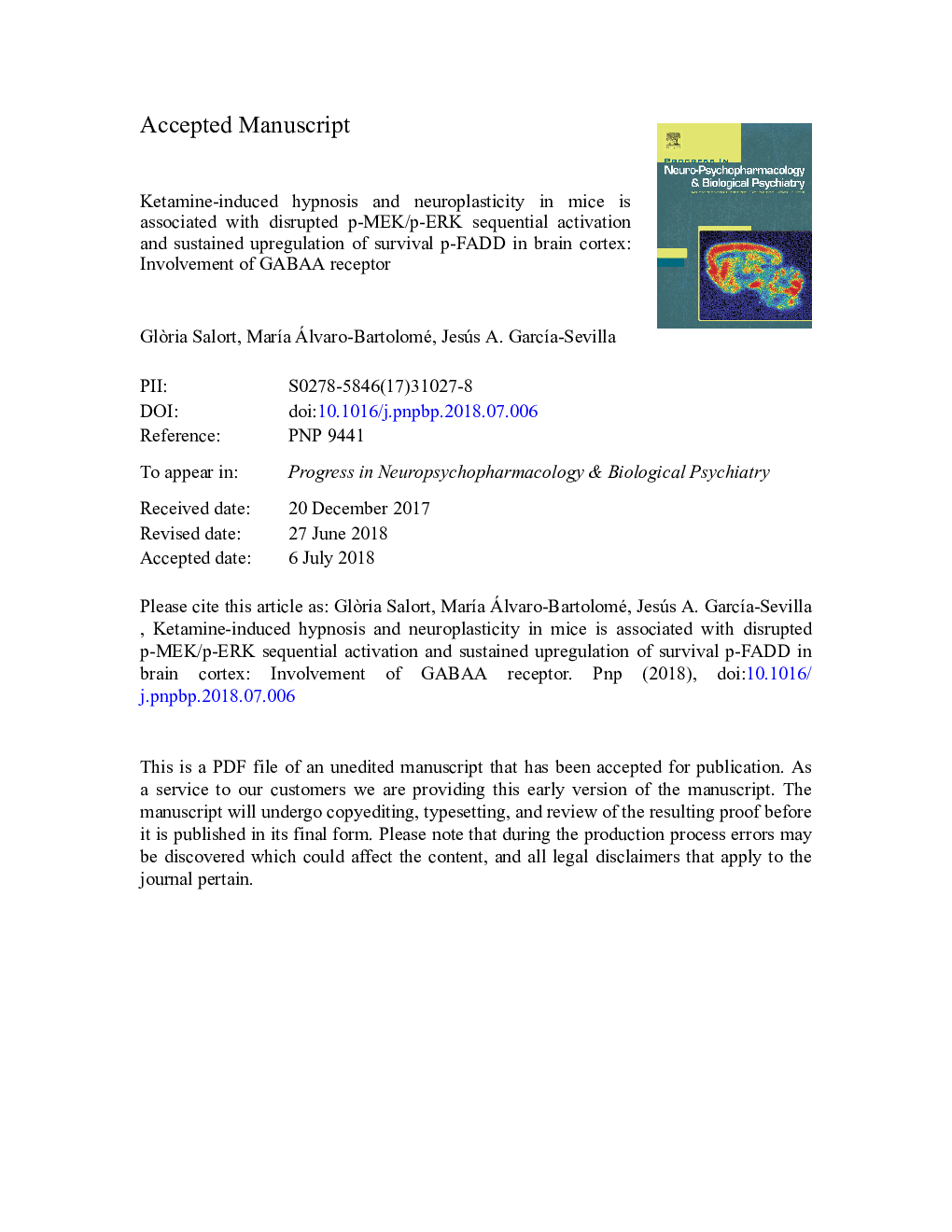| Article ID | Journal | Published Year | Pages | File Type |
|---|---|---|---|---|
| 8537134 | Progress in Neuro-Psychopharmacology and Biological Psychiatry | 2019 | 46 Pages |
Abstract
Ketamine (KET) is an antidepressant and hypnotic drug acting as an antagonist at excitatory NMDA glutamate receptors. The working hypothesis postulated that KET-induced sleep in mice results in dysregulation of mitogen-activated protein kinases (MAPK) MEK-ERK sequential phosphorylation and upregulation of survival p-FADD and other neuroplastic markers in brain. Low (5-15â¯mg/kg) and high (150â¯mg/kg) doses of KET on target proteins were assessed by Western immunoblot in mouse brain cortex. During the time course of KET (150â¯mg/kg)-induced sleep (up to 50â¯min) p-MEK was increased (up to +79%) and p-ERK decreased (up to â46%) indicating disruption of MEK to ERK signal. Subhypnotic KET (5-15â¯mg/kg) also revealed uncoupling of p-MEK (+13-81%) to p-ERK (unchanged content). KET did not alter contraregulatory MAPK mechanisms such as inactivated p-MEK1 (ERK dampening) and phosphatases MKP1/2/3 (ERK dephosphorylation). As other relevant findings, KET (5, 15 and 150â¯mg/kg) upregulated p-FADD in a dose-dependent manner, and for the hypnotic dose the effect paralleled the time course of sleep which resulted in increased p-FADD/FADD ratios. KET (150â¯mg/kg) also increased NF-κΠand PSD-95 neuroplastic markers. Flumazenil (a neutral allosteric antagonist at GABAA receptor) prolonged KET sleep and blocked p-MEK upregulation, indicating the involvement of this receptor as a negative modulator. SL-327 (a MEK inhibitor) augmented KET sleep, further indicating the relevance of reduced p-ERK1/2 in KET-induced hypnosis. These findings suggest that hypnotic and subhypnotic doses of KET inducing uncoupling of p-MEK to p-ERK signal and regulation of p-ERK (downregulation) and p-FADD (upregulation) may participate in the expression of some of its adverse effects (e.g. amnesia, dissociative effects).
Keywords
MDZMKPNF-kBERKLORRMEK-ERKloss of the righting reflexPSD-95KETNF-κBFADDMAPKMAPK phosphataseMAPK kinaseγ-aminobutyric acid-A receptorElk-1CNSRighting reflexcentral nervous systemNuclear factor-kappa BMEKMouse brainMidazolamneurofilament lightNeuroplasticityHypnosisFas-associated protein with death domainmitogen-activated protein kinaseKetamineextracellular signal-regulated kinaseGABAA
Related Topics
Life Sciences
Neuroscience
Biological Psychiatry
Authors
Glòria Salort, MarÃa Álvaro-Bartolomé, Jesús A. GarcÃa-Sevilla,
